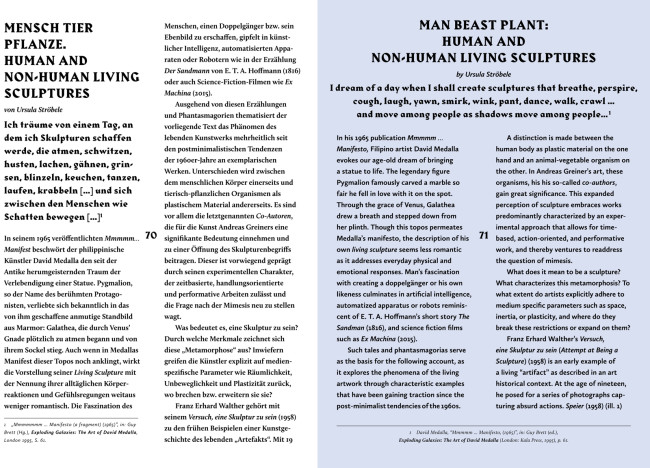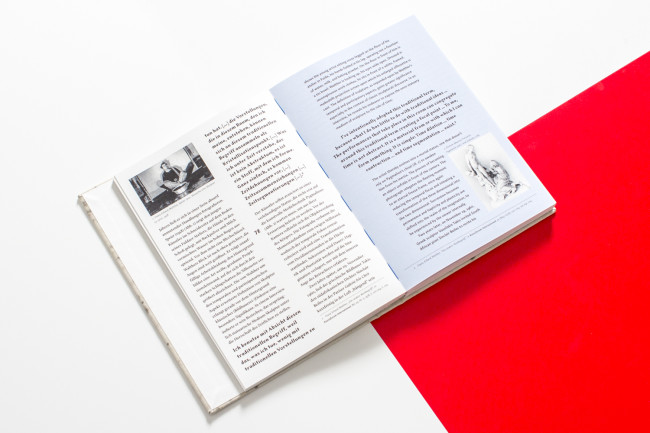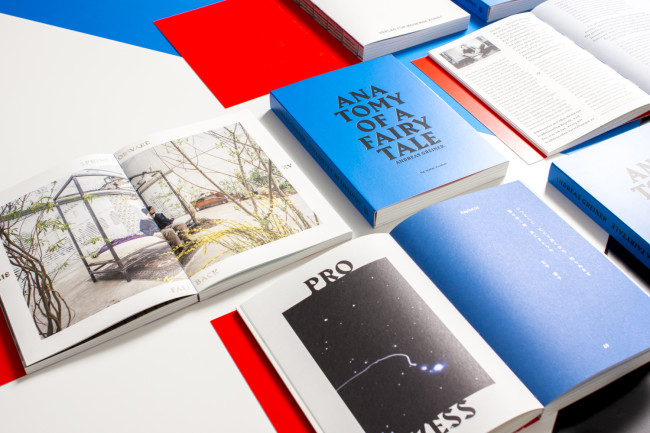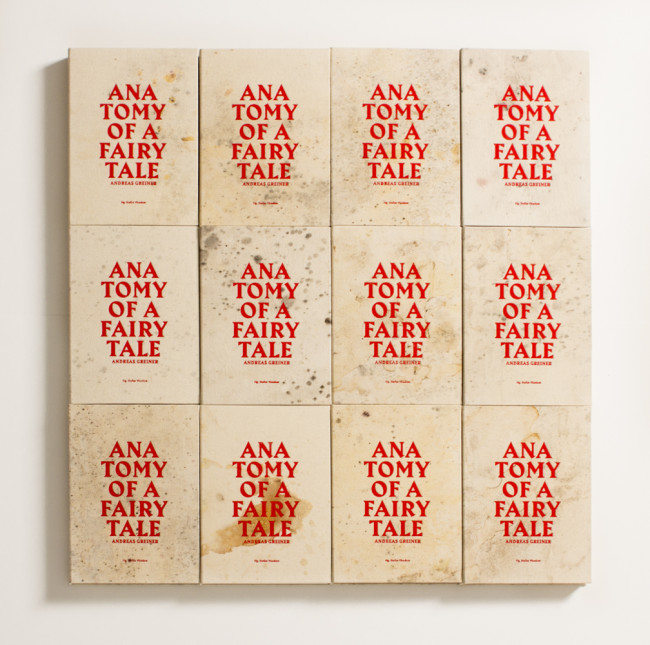NOWs: Anatomy of a Fairy Tale by Andreas Greiner
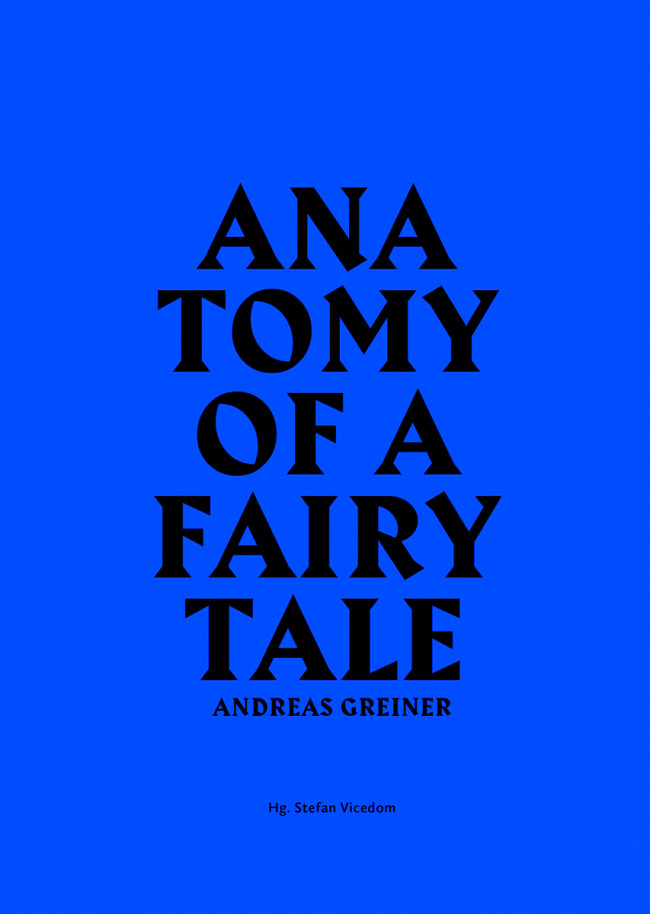
Anatomy of a Fairy Tale is the first comprehensive monograph on the work of artist Andreas Greiner. Time-based and living sculptures form the focus of his artistic practice. Experimenting with technoscientific processes, he integrates biological organisms – such as algae, insects and bacteria – as co-authors of his art works. Thus Greiners artistic position reflexively approaches the relation between human beings and their environment, which today is natural and artificial in equal part. Continuing his artistic practice the texts by authors of various scientific backgrounds develope expositions of the given range of topics.
Texts: Marie Egger, Desiree Förster, Prof. Dr. Nicole C. Karafyllis, Prof. Dr. Hans-Jörg Rheinberger, Dr. Christine Stahl, Dr. Ursula Ströbele, Stefan Vicedom.
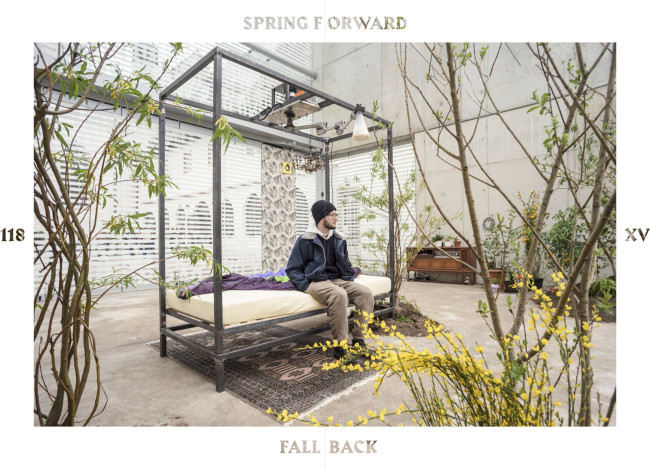
The introducing contribution Andreas Greiner: Volatile Experimental Currents, photographically recorded by art historian Christiane Stahl looks at Greiner’s photographic works to explore the specific potential of photography within the production of scientific images.
Meanwhile the text Man Beast Plant: Human and Non-Human Living Sculptures by art historian Ursula Ströbele focuses on Andreas Greiners use of life and ephemeral materials for his time-based and living sculptures, analyzing it in a multilayered, art historical, and aesthetic context.
The dialogue Hybrids between science historian Hans-Jörg Rheinberger and Andreas Greiner follows, wherein their personal experiences illuminate the deeper relation between the scientific and artistic practice of knowledge production, and highlight the relevance of such interactions with regard to current challenges.
Philosopher Nicole C. Karafyllis offers a short outline describing the term Biofact, emphasizing the necessity of a basic reevaluation of the categories „nature“ and „culture“.
In her text Being Interspecies. Negotiation Processes of Subjectivity and the Event Beyond Representation art historian Desiree Förster describes a growing interest within artistic practices to engage with ecological and biological phenomena, and considers the ability of art to serve as a unique testing ground for interactions between human and non-human agents.
The final contribution Dear Andreas: Notes on Cosmism appears in the form of a personal letter and picture collage by curator Marie Egger that traces the utopian and universal potential of Greiner’s artistic work by loosely intertwining these notions with the concept of „Cosmism“.
Aphorisms: Carson Chan, Eric Ellingsen, Yukiko Ohji, Donata Rigg, Prof. Dr. Otto E. Rössler, Lukas Töpfer, Stefan Vicedom
Accompanying the publication’s theoretical and visual content are short literary interventions by Carson Chan, Eric Ellingsen, Yukiko Ohji, Donata Rigg, Otto E. Rössler, Lukas Töpfer, and Stefan Vicedom. They each capture central moments of Greiner’s artistic involvement and reflected upon them through associative linguistics.
The monograph is being published in two versions, each as Swiss brochure with 248 pages. The design by Sin-U Ko visually relates to the anatomical textbook Recherches sur les ossements fossiles de quadrupèdes (1830) by Georges Curvier. While the deep blue cover version is meant for commercial sale, the special edition is limited to 100 copies and is released with a linen cover which surface reveals a unique pattern created by impregating the cloth with microorganisms and sterilising it.
The book is available at Verlag für moderne Kunst.
